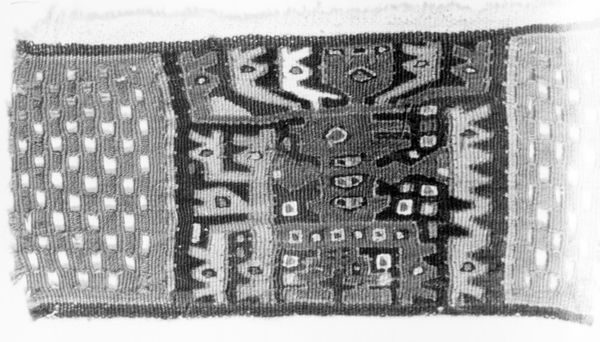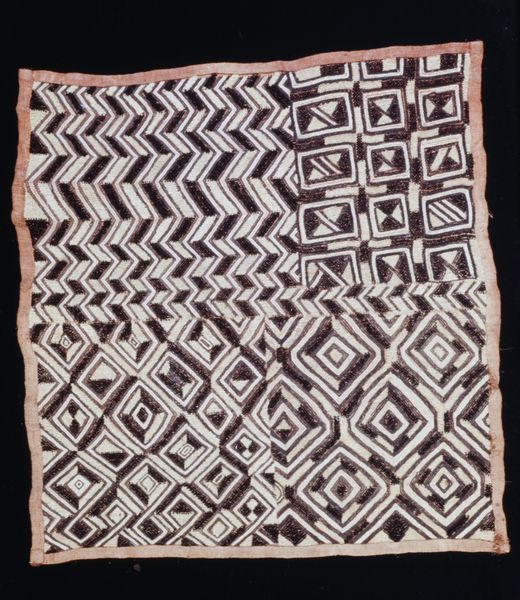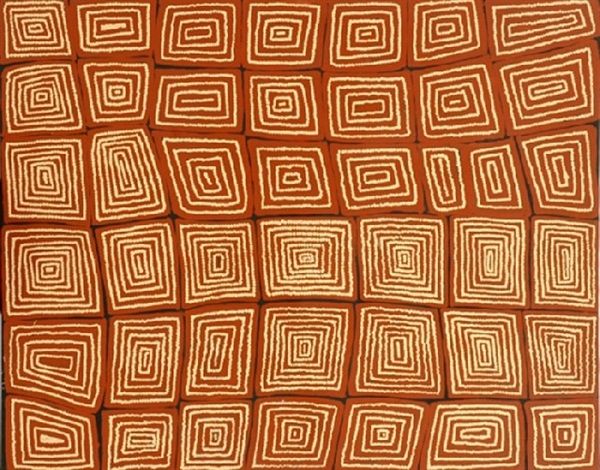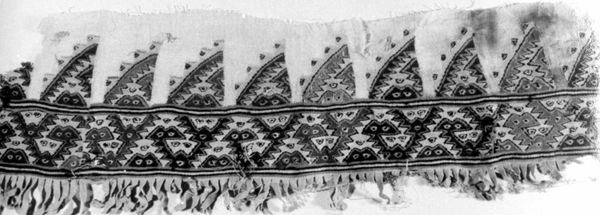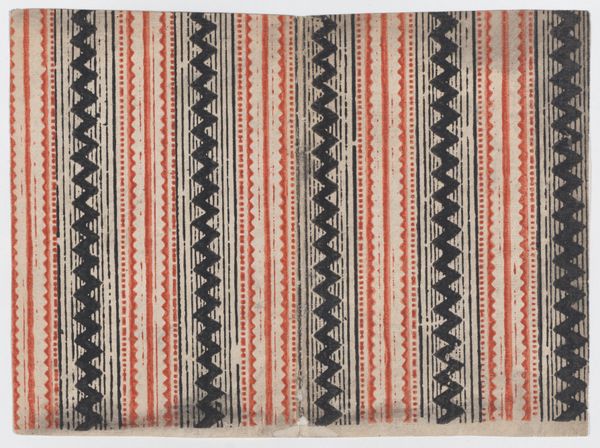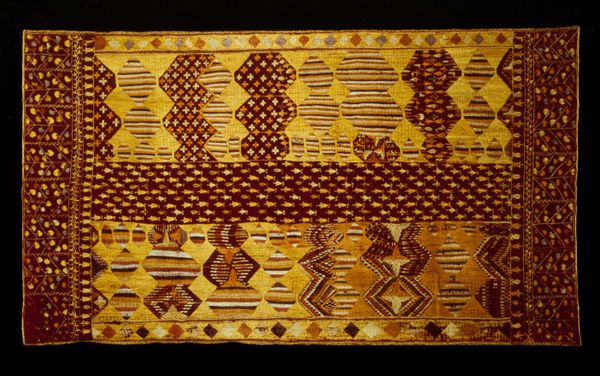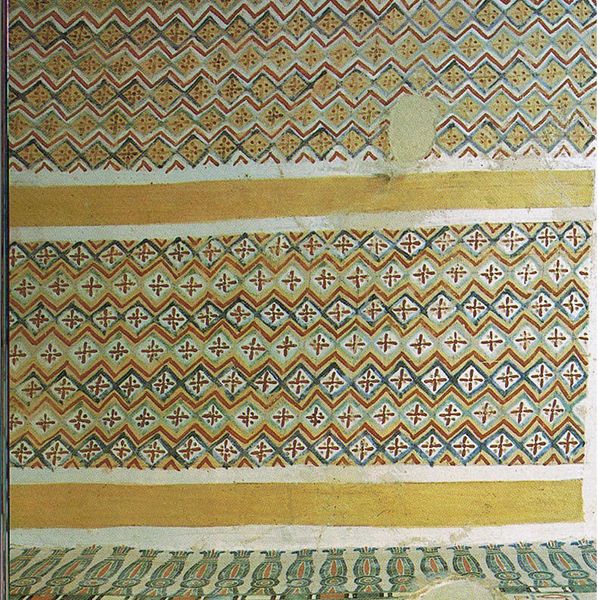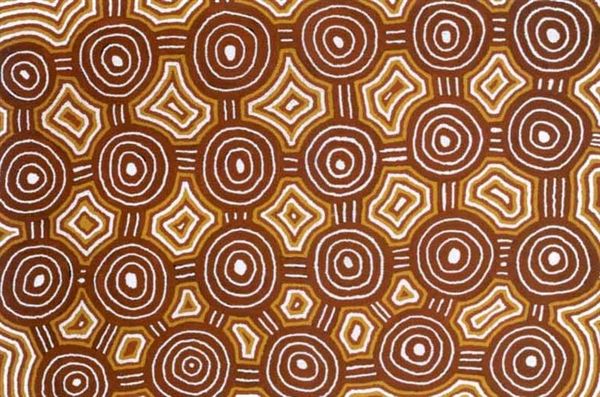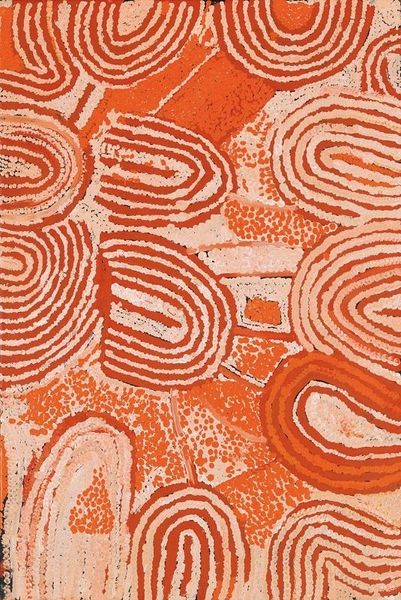
Copyright: Public Domain: Artvee
Curator: Here we have Paul Klee's 1925 mixed-media painting, "In the Manner of a Leather Tapestry," an abstract composition rendered in ink and paint on paper. What's your initial impression? Editor: Intricate and textured. The monochrome palette of browns gives it a somewhat aged, antique feel. It does actually resemble a worn tapestry. Curator: Yes, the application of line and shape yields a dense visual field. The composition functions as a structured arrangement of semiotic components; note the arrangement of forms like rows of abstract motifs, lending an almost linguistic quality. Editor: And those repeated motifs certainly feel loaded with meaning. Look at those little upside-down 'U' shapes. Don't they subtly suggest a mournful, weeping face in some ancient cultural depiction? It's simple but potent. Curator: Potent because of its spatial relationships; how the placement directs our reading. Those "weeping" motifs sit near others; we perceive groupings as distinct syntactic components. Each unit participates in a dialogic relationship with adjacent structures, creating emergent signification. Editor: That's insightful. Then there's that striking frond or geometric plant form on the upper-left. Perhaps it is hinting at nature rendered abstractly; an old visual marker from natural sources transformed into a more modern design. Curator: A provocative interpretation! Klee masterfully maintains the image's ambiguous status; his construction doesn't lead one meaning, but rather opens channels between form and reading, allowing the viewer to activate significance. Editor: So ultimately, the artwork, with its tapestry-like textures, echoes that blending of the primitive and the avant-garde—a woven history of art. Curator: Exactly. Klee uses visual means here, achieving an elegant, formally rigorous construction open for individual interpretations, allowing his viewers an opportunity to explore, through his craft, both art history and one's self.
Comments
No comments
Be the first to comment and join the conversation on the ultimate creative platform.

